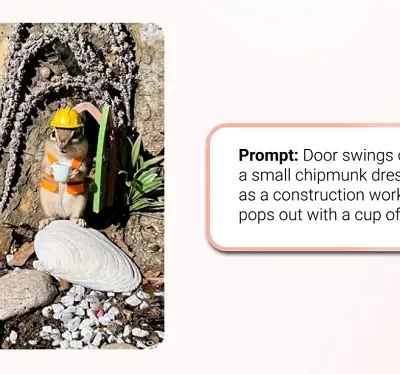For the past decade, rate marketing has been the dominant gravitational force in mortgage acquisition. Whoever shouted the lowest 30-year fixed rate the loudest won the most attention. But attention has never been the same as intent, and intent has never been the same as a closed loan.
What’s happening now is more fundamental than a rate cycle or a marketing shift. It’s a reordering of how borrowers discover homes, evaluate affordability, and choose which lender earns their trust first. The market is emerging from a prolonged affordability crisis, and with it comes a simple truth: buyers don’t shop for a mortgage—they shop for a payment. Lenders who fail to recognize this will experience increasing funnel leakage, declining pull-through, and a shrinking ability to influence the purchase path when it matters most.
This is the same inflection point identified in my previous HousingWire piece on affordability-first search and the revival of patent claims, where the industry stands at a crossroads between outdated rate-forward thinking and a payment-aware paradigm.
2026–2027 will be defined by three emerging rails reshaping the purchase landscape:
1. Payment intelligence
2. High-intent buyer retention
3. Capital participation & Co-equity affordability models
Together, they form the new competitive frontier.
1. Payment intelligence: The rail that replaces rate marketing
The most important UX in residential real estate is also the least discussed: searching by monthly mortgage payment. Homebuyers don’t wake up thinking in listing-price ranges—they think in monthly obligations.
Yet virtually every discovery platform still pushes a price-first experience while ignoring the variable that actually determines whether a borrower can make an offer.
Payment intelligence solves three structural problems that traditional search engines and lender funnels cannot:
• It anchors the buyer to affordability grounded in real underwriting variables, not guesswork.
• It ensures that every home a borrower views is actually within their viable monthly envelope.
• It pulls the lender into the discovery experience at the exact moment where intent is highest.
When buyers shop by price, they eventually collide with reality: taxes, PMI, insurance, HOA dues, rate fluctuations, and loan structure can swing a $450,000 home from “affordable” to “impossible.” By contrast, payment-first discovery removes this friction.
The lender who controls the payment view gains first position in the buyer’s mental model. And the lender who gains first position gains the highest probability of retaining the borrower through contract and closing.
Payment intelligence is no longer optional. It’s the new entry ticket.
2. High-intent buyer retention: Where scale nleed is happening
If the last three years taught the industry anything, it’s that volume doesn’t equal durability.
Purchase business is brittle. Intent is fragile. And scale bleeds out of an organization long before a loan file ever appears.
The modern borrower journey plays out across four touchpoints:
1. Initial curiosity
2. Search and selection
3. Offer readiness
4. Prequal and loan allocation
Lenders typically only control steps 3 and 4. The problem?
By then, the borrower has already chosen an agent, chosen inventory, and often chosen a competing lender.
Scale bleed happens because lenders are structurally absent from the earliest, highest-quality intent signals. They are fighting downstream battles with upstream tools.
To win in 2026, lenders must shift from “responding to inbound” to engineering upstream retention environments, where they surface inventory that the borrower can afford and win. When the lender is the one helping the buyer discover viable homes, the lender becomes part of the buyer’s decision-making loop—not a commodity chosen after the fact.
This is how lenders reverse scale bleed:
• Influence the inventory the borrower sees
• Shape the definition of “affordable” before an agent does
• Provide real-time payment intelligence tied to live listings
• Keep the buyer inside a lender-owned ecosystem of discovery → prequal → contract
The lender who influences the home-selection step owns the downstream mortgage opportunity.
3. Capital-participation & co-equity models: Expanding affordability and inventory
Co-equity structures, shared appreciation products, and capital-partner participation models are rapidly becoming the third rail of affordability expansion.
The problem they solve is simple:
the gap between what buyers can afford and what inventory is available.
A down payment shortfall of $15,000–$40,000 is enough to take an otherwise qualified buyer out of the market. Co-equity fills that gap without traditional debt. But its true power emerges when paired with payment intelligence:
• Payment-first search identifies a buyer’s monthly ceiling
• Co-equity capital fills the down payment delta
• The buyer re-enters the market with expanded inventory and competitive positioning
Lenders have historically viewed co-equity as “adjacent” to the mortgage process. That is changing. In a tightening affordability era, co-equity becomes not just a financial tool but a sales enablement rail, making previously unworkable homes penciled-in and fundable.
Capital partners, too, are evolving. They want scalable channels to deploy equity where it produces predictable returns, and lenders—with their access to live demand signals—are ideally positioned to integrate these products at the point of sale.
If 2024–2025 was the era of experimentation, 2026–2027 will be the era of deployment at scale.
The core argument: The next decade belongs to lenders who shape buyer choice
The race is no longer about leads, rates, or marketing budgets. It’s about owning the buyer’s definition of affordability.
The lenders who win will:
• Surface payment-tailored inventory faster than any portal • Provide affordability unlocks powered by capital participation • Build retention frameworks that start before the prequalification
• Influence purchase decision-making earlier than agents, portals, or advertisers
This isn’t a theoretical future. It’s already happening in fragments—just not orchestrated.
The industry now needs integration, vision, and execution. The question is simple: who will build it?
And for lenders: will you be in the decision loop or outside it?
Patrick A. Neely is the creator of Search-by-Payment (patent-pending), founder of HomeSifter, and former USPTO examiner focused on financial-services business methods.
This column does not necessarily reflect the opinion of HousingWire’s editorial department and its owners. To contact the editor responsible for this piece: [email protected].




